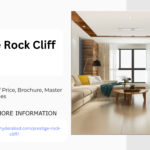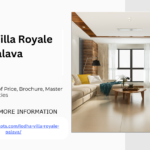Having a professional and functional website is crucial for any business or personal brand. For a lot of learners, hiring a website designer might be an intimidating task. From understanding the design process to knowing how to communicate your vision, the journey can seem overwhelming. This step-by-step guide goals to simplify the process, guaranteeing you hire the precise designer and get the most effective results on your website.
Step 1: Understand Your Website Needs
Earlier than you even start the search for a website designer, it’s essential to clearly define your website’s goals. Ask your self the next questions:
– What type of website do I would like? (e.g., blog, e-commerce, portfolio, business site)
– What features and functionalities are necessary? (e.g., contact forms, payment gateways, membership areas)
– What’s the purpose of the website? (e.g., to inform, sell, interact)
Having a transparent understanding of your wants will let you communicate higher with potential designers. It will additionally show you how to assess whether a designer’s experience and expertise align with your requirements.
Step 2: Determine Your Budget
Website design can vary widely in worth, depending on the advancedity, level of customization, and the designer’s experience. Before you begin the hiring process, determine a budget that displays your goals and expectations. It’s crucial to be realistic about what you may afford and what your site truly needs.
A easy website might value a number of hundred dollars, while a totally personalized site with advanced functionalities can run into the thousands. Keep in mind that a website is an investment, and skimping on design could affect your online business in the long run.
Step three: Research Potential Designers
When you know what you want and the way much you’re willing to spend, it’s time to start your search for a website designer. Here’s tips on how to begin:
– Portfolio Reviews: Look at potential designers’ portfolios to assess their design style and previous work. This will make it easier to understand their capabilities and whether or not their aesthetic aligns with your vision.
– Specialization: Some designers focus on certain platforms like WordPress, Shopify, or customized-coded sites. Make positive the designer has experience with the platform you intend to use.
– Evaluations and Testimonials: Reading critiques from previous shoppers or reaching out for testimonials can provide insight into the designer’s reliability, communication, and work ethic.
Step 4: Put together for the Initial Consultation
Once you have a shortlist of potential designers, schedule consultations with them. This is an opportunity to discuss your project intimately, ask questions, and gauge whether or not they’re a great fit on your needs. During the session:
– Talk Your Vision: Provide the designer with as a lot element as doable regarding what you want your website to look like and the way you need it to function. Share examples of websites you admire to help them visualize your goals.
– Ask Questions: Ask about their design process, timelines, payment constructions, and any additional costs. Understand how they handle revisions and what happens if things don’t go as planned.
– Consider Their Communication Style: A designer’s ability to listen and understand your wants is as important as their technical skills. You’ll want to guarantee they’re responsive and approachable throughout the project.
Step 5: Review Proposals and Sign a Contract
After consultations, you must receive proposals outlining the scope of work, pricing, and timelines. Evaluation these carefully to make sure that everything mentioned is included. Don’t hesitate to ask for clarification if something is unclear.
Once you’ve chosen a designer, you must sign a contract before any work begins. This contract ought to clearly outline:
– The scope of work (what will be delivered)
– Timelines and milestones
– Payment terms and schedule
– The number of revisions included
– Any additional costs or charges
– Ownership of the website and design files
An in depth contract protects both you and the designer, guaranteeing that there is a clear understanding of expectations.
Step 6: Collaborate Through the Design Process
The design process is a collaborative effort. As soon as the project starts, stay engaged by providing well timed feedback and clarifying any uncertainties. A very good designer will keep you updated on the progress and seek your input at key stages.
Keep in mind to trust the designer’s experience, but in addition don’t hesitate to speak up if something isn’t meeting your expectations. Clear communication is vital to making sure the final product aligns with your vision.
Step 7: Testing and Launch
Earlier than your site goes live, thorough testing needs to be conducted. This includes:
– Functionality Testing: Ensure all features (forms, shopping carts, payment systems) work correctly.
– Browser and System Compatibility: Your site must be responsive and functional across all browsers and units, including mobile phones.
– Loading Speed: A gradual website can deter visitors, so make sure the site loads quickly.
Once testing is complete, you’re ready to launch! The designer must be able to help with the launch process and provide you with any vital documentation for maintaining the site.
Step eight: Ongoing Maintenance
Websites require ongoing maintenance to stay functional and secure. After the launch, discuss with your designer the options for continued assist, updates, and potential future revisions. Some designers supply upkeep packages, while others can provide training so that you can handle easy updates yourself.
Conclusion
Hiring a website designer may seem daunting at first, however by breaking the process down into clear, manageable steps, you will discover a designer who aligns with your vision, budget, and goals. Remember, clear communication, a stable contract, and an understanding of your needs are the foundations of a successful website design project.
If you loved this short article and you would like to receive even more info concerning طراحی وب سایت kindly see our webpage.







Right now it seems like Drupal is the best blogging platform out
there right now. (from what I’ve read) Is that what you’re using on your blog?
Hurrah! In the end I got a weblog from where I can in fact take useful
facts concerning my study and knowledge.
Attractive component of content. I simply stumbled upon your web site and in accession capital to claim that I
get actually enjoyed account your weblog posts.
Anyway I will be subscribing for your feeds or even I fulfillment you access persistently rapidly.
I am sure this article has touched all the internet users, its really
really good paragraph on building up new
weblog.
Hi there it’s me, I am also visiting this web page daily, this web site is truly nice and the viewers are truly sharing good thoughts.